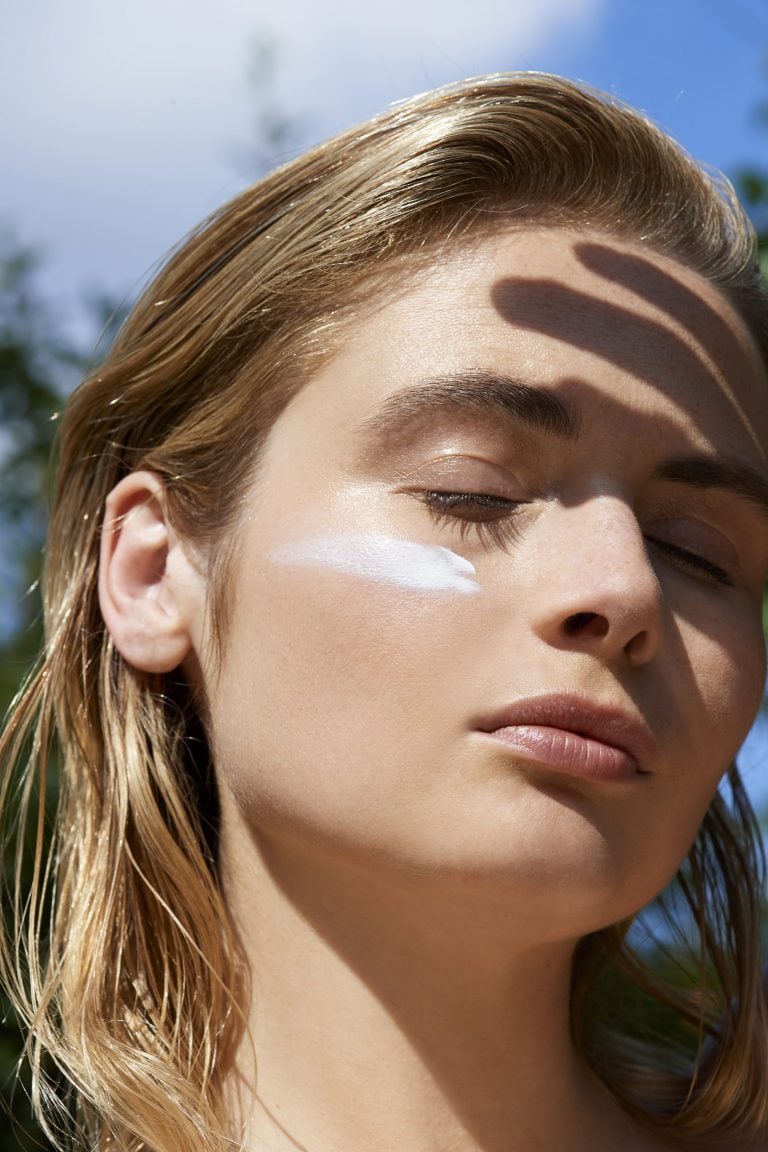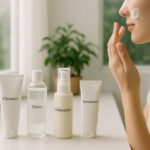Using sunscreen is an important step in protecting your skin from the sun’s harmful rays. However, finding the right product can be a challenge. In this guide, we’ll go through the criteria for choosing a sunscreen and offer tips on how to select the best one for your skin type.
1. Steer Clear of Parabens and Common Irritants
When choosing a sunscreen, opt for products that are free from parabens, phthalates, and sulfates. Parabens are preservatives commonly found in cosmetics, food, and hair care products. While they prevent bacterial growth and extend the product’s shelf life, studies suggest they may irritate the skin, disrupt hormones, and increase the risk of certain health issues. It’s also best to avoid potential allergens like fragrances, dyes, and certain chemicals that can cause skin irritation.

Choose sunscreens that are free from parabens, phthalates, and sulfates.
2. Physical vs. Chemical Sunscreens: Understanding the Difference
Knowing the difference between physical and chemical sunscreens is key to making the right choice:
Physical Sunscreens: These contain mineral ingredients like titanium dioxide or zinc oxide, which create a barrier on the skin to reflect UV rays. They are gentler on sensitive skin and safer for pregnant women and children.
Chemical Sunscreens: Chemical sunscreens use ingredients like oxybenzone, avobenzone, and homosalate to absorb and convert UV rays into heat. They tend to be lighter and quicker to absorb, making them suitable for outdoor activities, but they may cause irritation for some individuals.
3. Choose a Sunscreen Tailored to Your Skin Type
Sensitive Skin: Go for fragrance-free, alcohol-free, and dye-free sunscreens. Products designed for children are also a safe bet.
Oily Skin: Opt for milk or gel-based sunscreens, as their lightweight formulas won’t clog pores or add extra shine.
Acne-Prone Skin: Look for non-comedogenic, gentle formulas that are oil-free to avoid exacerbating acne.
Aging Skin: Choose a sunscreen with added moisturizing and antioxidant benefits to prevent wrinkles and protect against environmental damage.

Choose a sunscreen with added moisturizing and antioxidant benefits.
4. Prioritize Broad-Spectrum Protection
There are two main types of UV rays:
UVA Rays: These penetrate deep into the skin, causing aging and pigment changes.
UVB Rays: These are responsible for sunburns and skin surface damage.
To ensure comprehensive protection, look for sunscreens labeled “Broad Spectrum” or “Phổ bảo vệ rộng” to defend against both types of rays.
5. Opt for SPF 30 and Above
SPF, or Sun Protection Factor, indicates the level of protection against UVB rays:
SPF 30: Blocks approximately 97% of UVB rays.
SPF 50: Blocks approximately 98% of UVB rays.
However, higher SPF doesn’t mean you can skip reapplication. Reapply sunscreen every two hours, or more frequently if you’re swimming or perspiring heavily, to maintain effective protection.
6. Don’t Rely on Makeup with SPF
While some makeup products like foundations and cushions may have SPF, they often don’t provide sufficient protection. Always use a dedicated sunscreen underneath your makeup to ensure optimal defense against the sun’s rays.
7. Reapply Sunscreen Properly
Reapplication is crucial, especially if you’re spending extended periods in the sun. Dermatologists recommend reapplying:
Every two hours, or sooner if you’ve been swimming or perspiring heavily.
Use spray or stick sunscreens for quick and easy reapplication on the go.
Is Slathering on Sunscreen Really Good? Expert Reveals How to Apply Sunscreen the Right Way
Applying sunscreen is an essential step in any daily skincare routine, alongside cleansing and moisturizing. While it is a crucial protective measure against the harmful effects of UV rays, sunscreen also helps prevent skin aging and cancer. However, a common misconception exists that applying more sunscreen leads to better protection. But is this belief accurate?




































